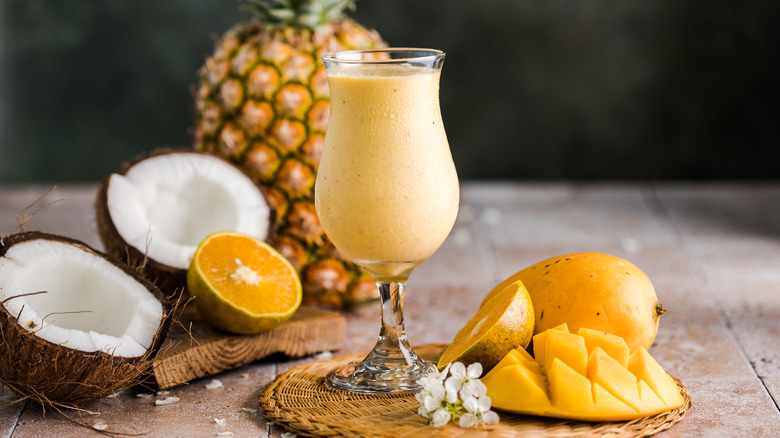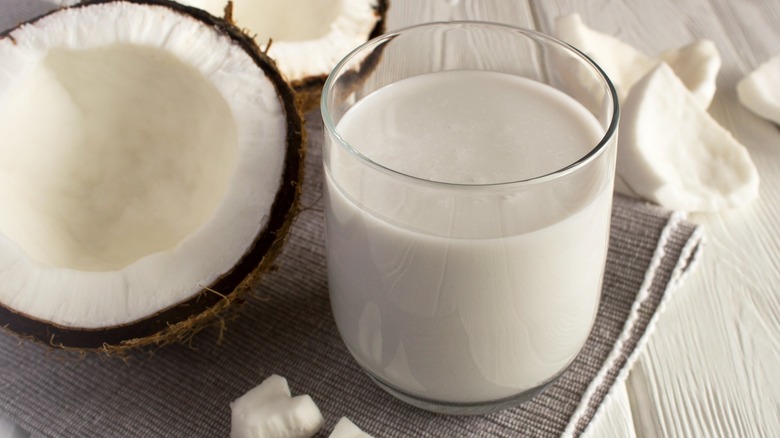Coconut Milk Vs Cream: Which Should You Use For A Tropical Drink?
Like a truly memorable meal, a cocktail is only as good as the quality and balance of its ingredients. Tropical drinks often get dogged upon by elitist sippers, but world-renowned tiki bars from The Soggy Dollar on Jost Van Dyke's White Bay to Porco Lounge in Cleveland know that craft tiki cocktails come in many sizes, shapes, and consistencies. On the note of consistency, which is better to use in a tropical drink, coconut cream or coconut milk?
Both ingredients are made with grated coconut flesh and water. The difference lies in their ratio of fat to water content. Coconut cream contains more coconut flesh and fat, resulting in a richer flavor and thicker texture. It's also frequently sweetened in the form of the widely available cream of coconut, and presents a naturally sweeter flavor to begin with compared to its milkier counterpart. Conversely, coconut milk is opaque white, unsweetened with a strong coconut-forward flavor, and is more similar to a thick whole milk than to a cream.
It also contains significantly more water than coconut cream, which is why it separates when left to sit. When it comes to cocktails, there isn't a one-size-fits-all standard for which ingredient is "better." The short answer is: It depends. Coconut cream brings a rich, luxurious texture to many cocktails, but thinner coconut milk gives bartenders more control over the sweetness. As such, the ingredients function better in different drinks.
Coconut cream performs better in frozen tropical drinks
As a general rule, frozen tropical drinks function better with thicker and sweeter coconut cream. A classic silky Piña Colada is made with coconut cream, and so is the chocolate-coffee dessert cocktail, The Bushwacker. In a Painkiller, both the lush mouthfeel and subtle sweetness of coconut cream are essential for offsetting (or, more accurately, masking) the drink's punchy potency. After all, it's the official drink of Pusser's rum, and is literally called a "painkiller" for a reason. With most tropical cocktails, the choice of whether to use coconut cream or coconut milk will depend on whether you're making a frozen version of the drink or enjoying it on the rocks.
With these different textures and subsequently varying levels of dilution, different flavor notes in the ingredients become more or less pronounced. For instance, in an on-the-rocks Bahama Mama, the flavor of the coffee liqueur shines, meaning coconut milk is the better choice, here, stepping into the background as a strong supporting character. The same is true of the Blue Hawaiian, in which coconut cream can be cloyingly sweet on the rocks, but is essential to a creamy, sweet sip when the drink is frozen and blended. When in doubt, opt for full-fat Thai coconut milk to build a successful, balanced drink. It features a higher fat content than most "regular" coconut milk options, while allowing for greater control over the sweetness level in a cocktail.

